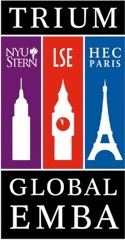global management experience: not enough
 Having global management experience is not enough. You have to master global experience management: CEM.
Having global management experience is not enough. You have to master global experience management: CEM.
If only Wal-Mart had known how to do this, they would never have obliterated the value of their extensive satellite network-driven supply chain management system by forgetting that Germans don't shop like people from Little Rock. (Read about Wal-Mart's rejection in Germany in Ideas & Observations.)
 Your organization creates long-term value only through the customer's experience (both direct and indirect) of your company, its product, and its services.
Your organization creates long-term value only through the customer's experience (both direct and indirect) of your company, its product, and its services.
CEM is the organizational discipline that lets you discover the drivers of customer value regardless of segment, culture or regime, and then create scalable efforts that leverage your resources to create that value in the customer experience, defensibly.
CEM goes beyond marketing, branding and customer service to help create an organization that balances the need for differentiated offering and how their customers define "value" -- and that's not just "value for the dollar, or peso, or yuan." CEM at a large scale is a blue ocean strategy. At the margins is a cross-silo performance management system.
In the global context, customers define value and values in different ways. This means that CEM must respond differently to optimize return on customer relationship (ROCR) in a strategic way. Since ROCR is a leading indicator of total return to shareholders (TRS), the best way to employ a multinational's capital is to link customer experience with financial performance, regime-by-regime, sector-by-sector and market segment-by-market segment.
Customer experience management, above all, is an organizational design methodology and builds capacity to understand and act on customers stated and unstated wants and needs. While this may not sound revolutionary, in fact it is. The reason is that key performance indicators that drive results and internal incentives have a broader scope and narrower definition than in the past. Processes that drive those KPIs have to be formulated in new ways, with new, better "listening posts." And, in the end, since many of those KPIs link a customer's emotional state to future profit and loss, CEM requires a culture change that respects emotion as a key value driver. This is not soft science: the statistics are overwhelming, even in a business-to-business context, that emotion drives wallet-share, recommendation behavior, and total lifetime customer value ("return on customer relationship").
And because different people - and different peoples - have different emotional responses based on their experiences, it is critical that a comprehensive, fact-based organizational design deliver experiences that generate the right emotional responses. The design has to be on-brand, authentic, defensible, differentiating, and appropriate to the regime in which the company does business. This is far from a soft science, it is management and leadership at the highest leve.
Most multinationals are misappropriating funds because they're too centered on how they've done things in the past, without regard to such variability in value proposition, and with no systems to manage the complexity of organizational design that creates an optimal TRS.
That's a lot to chew on. But keep in mind Wal-Mart's experience in Germany, and you'll see what I mean.

Customer experience management is a closed loop science that lets branding, product, service and sector strategies align around a single goal: sustainable profits through differentiated customer engagement.



